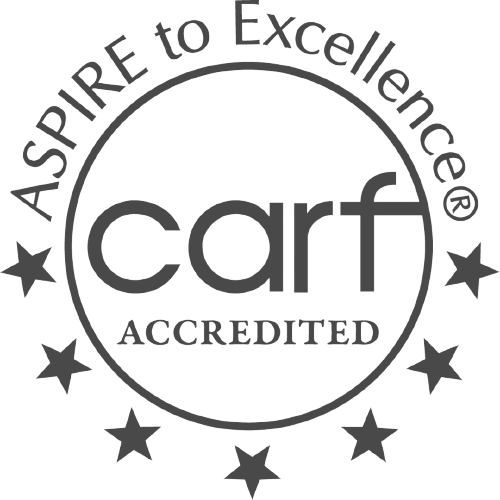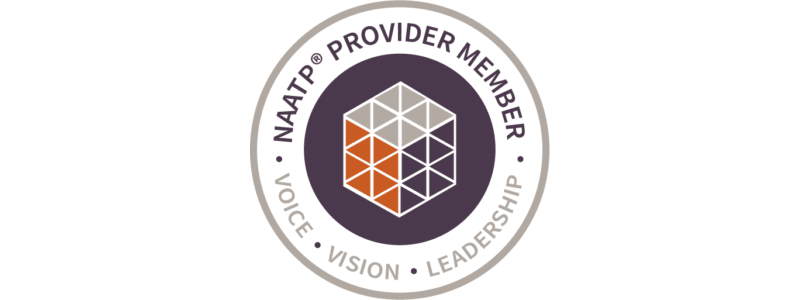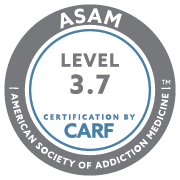 As people continue to search for the next place to get their fix, they might start to turn to unconventional places. This is especially true for those of a younger age, like teenagers and young adults who might not have access to conventional drugs but do have access to everyday household products. Drug abuse comes in many different shapes.
As people continue to search for the next place to get their fix, they might start to turn to unconventional places. This is especially true for those of a younger age, like teenagers and young adults who might not have access to conventional drugs but do have access to everyday household products. Drug abuse comes in many different shapes.
One of the ways that they can get high at home is by inhaling the chemicals associated with some of these products, otherwise known as inhalants. While inhaling these products might seem innocent enough, doing so can have significant and major consequences, including developing an addiction and even major health complications. Let’s take a look at inhalant abuse and ways to get treatment for inhalants and an inhalant addiction.
What Are Inhalants?

Inhalants are chemicals that are found in some typical household or office products that produce chemical vapors. When inhaled or ingested, these chemicals can produce a variety of mind-altering effects. Inhaled substances are rapidly absorbed into the brain to produce a quick high. Chronic inhalant abuse can result in irreversible side effects, such as coma and even death.
While people of all ages have been known to abuse inhalants, inhalant abuse is most commonly found in teenagers aged 14 to 19 years old. However, abuse is also seen in children as young as 5 or 6. Inhalant abuse is much more common in men than in women. It can stem from a history of physical or sexual abuse, delinquency, criminal behavior, depression, suicidal behavior, antisocial attitudes, family conflict, violence, and/or drug abuse.
How Common is Inhalant Addiction?
Among people aged 12 or older in 2020, 0.9% (or about 2.4 million people) reported using inhalants in the past 12 months. In 2021, an estimated 4.8% of 8th graders, 2.0% of 10th graders, and 1.8% of 12th graders reported using inhalants in the past 12 months. Among people aged 12 or older in 2020, 0.1% (or about 215,000 people) had an inhalant use disorder in the past 12 months.
Young Adults and Inhalant Abuse
According to a US National Library of Medicine study, one in ten of all adults have used an inhalant at least one time in their lives. 8% of the adults that have used an inhalant within the past year met the criteria for an inhalant use disorder. The study found an increased prevalence of inhalant use among young adults ranging from ages 18 to 25.
Inhalants likely affect a younger than normal age group since inhalants are easily obtained. Young adults can easily acquire products like canned whipped cream, lighter fluid, nail polish remover, and paint thinner from most convenience stores.
What Are the Different Types of Inhalants?
There are thousands of common products that can be used and abused as inhalants. Chronic abuse may require addiction treatment. As we discussed above, they are significantly cheaper and easier to obtain than illicit substances. A plastic or paper bag is commonly used when people abuse inhalants. Mixing other drugs with inhalants can be dangerous, even leading to sudden death.
While there are thousands of different products that can be used as inhalants, they all tend to fall into one of four categories. The commonly abused inhalants are broken down into these categories:
- Volatile Solvents
- Aerosols
- Gases
- Nitrates
A volatile solvent is a liquid that vaporizes at room temperature. This is found in a variety of typical household and industrial products. Some examples of volatile solvents include:
- Paint thinners
- Gas
- Lighter fluid
- Glue
- Nail polish remover
- Dry cleaning materials
- Corrective fluid such as liquid whiteout
- Markers
- Degreasers
- Rubber cement
Aerosols are sprays containing both solvents and propellants, which are used to produce pressurized gas. Some common examples of aerosols include:
- Spray paint
- Spray deodorant
- Hair spray
- Fabric softener or other fabric protecting sprays
- Vegetable oil spray
Gases include medical anesthetics as well as gases used in household or commercial products. Some examples of common medical anesthetics include chloroform, halothane, and nitrous oxide. Nitrous oxide, also known as laughing gas, is by far the most abused of all the gases because it’s found in commonly used products like whipped cream dispensers and propellant canisters. Ingesting gases in this manner is commonly known as “whippets.” Gases can also be found in common household products such as butane lighters, propane tanks, and refrigerants.
While nitrites are a type of inhalant, they tend to be looked at differently than the inhalants listed above. Unlike most other inhalants, nitrites act directly on the central nervous system. While other inhalants are used to alter mood, nitrites are used primarily as sexual enhancers. Common nitrites include:
- Cyclohexyl nitrites
- Isoamyl nitrites
- Isobutyl nitrites
While nitrites are largely prohibited by the Consumer Product Safety Commission, they can still be found in certain products such as video head cleaners, room odorizers, leather cleaners, and liquid aromas.
While those with a substance abuse disorder will likely choose any of the types listed above that are available to them, effects may vary. As a result, some people might have their inhalant of choice.
Side Effects of Inhalant Abuse
Aggression
Poor Judgment
Poor Functioning
Slurred Speech
Muscle Weakness
Dizziness and Nausea
How Are Inhalants Typically Abused?
When someone abuses inhalants, they tend to breathe them in through their nose or their mouth. This allows the inhalant to hit the bloodstream quickly, speeding up the time it takes to get high. They may sniff or snort fumes from a container or dispenser, spray aerosols directly into the nose or mouth, or place a chemical-soaked rag over the mouth or nose. Since the high from an inhalant tends to only last minutes, the person might do it several times throughout the day.
Acute inhalant intoxication can begin to occur from the first hits. For example, commonly abused toxic substances such as nitrous oxide, hair spray or paint thinners contribute to inhalant use.
If you’re concerned that someone you know might be abusing inhalants, the following are some slang terms to look out for that describe either the inhalant itself or inhalant abuse:
- Glue
- Bang
- Sniff
- Whippets
- Kick
- Poppers
- Snappers
- Huffing
- Dusting
- Bagging
- Snorting
- Sniffing
Inhalant Abuse Prevention
Inhalation abuse is a very common occurrence among people and it has become very widespread. To prevent inhalant abuse, people should be aware of the signs of inhalant addiction. Drug-alcohol abuse can increase the chances of accidents, overdoses, and more. Detecting inhalant abuse is the first step in diagnosing a substance use disorder.
Preventive methods have an objective of lowering social acceptance of abuse and are aimed at broadening community involvement not merely of the victims and their families, but in addition peers, education, and retail outlets. Involving inhalers in the prevention of drug abuse was a mixed process. Three states were unable to adopt a law that allowed for additives to be harmful in causing the intoxication of users, making identification of a drug difficult.
The Long-Term Effects of Inhalant Abuse
Chronic misuse was reported to result in serious neurological and neuropsychological problems probably due to the damage by lipophilic chemical agents. More concentrated on the nerves and blood they are susceptible to cortex atrophy or neuro-imaging. Inhalants can lead to neuromuscular disorders, including traumatic brain injury.
The symptoms can range from headaches and nausea, as well as ataxia and narcissistic reactivity. The inhalation of medications may cause cardiomyopathy causing different alterations to the electrocardiographic system.
For example, sudden sniffing death syndrome is a devastating symptom of inhalant addiction. Sudden cardiac death has been linked to inhalant abuse, so seek medical attention if someone you know has become ill due to addictive substances.
What Are Some Signs of Inhalant Abuse?

In addition to learning the “lingo” that comes along with inhalant use, there are certain signs to look out for when it comes to identifying inhalant abuse. Some of the more common signs of substance abuse include:
- A sudden change in who the person is hanging out with or what they’re doing
- The constant smell of chemicals on their breath or clothes
- Stains on hands, fingers, or new clothes
- A significant and sudden change in behavior
- The development of poor hygiene or grooming habits
- A rapid decline in performance at either school or work
- Constantly being tired
- Suffering from a runny nose or nosebleeds
- Slurred speech
- The development of ulcers or irritation around the nose and mouth
If you notice one or more of these signs, it might indicate that your loved one is suffering from inhalant abuse.
What Are The Withdrawal Symptoms of Inhalant Abuse?
Giving up inhalants after using them for a long time is challenging because the body has to get used to functioning without them. The mental status of the inhalant abuser could worsen during this period. The central nervous system needs to heal from chronic abuse. Withdrawal symptoms usually start 24-48 hours after the last use and may last for 2 to 5 days.
These symptoms can include:
- Hangover
- Headache, nausea, and stomach pain
- Tiredness, shakiness, tremors
- Cramps
- Hallucinations and visual disorders, such as seeing spots.
Treatment programs for inhalant abuse are measures used to prevent inhalant-related deaths.
What Are Some of the Medical Risks of Using Inhalants?
While the use of inhalants can produce a quick, short-acting high at the moment, the after-effects can be significant from a health perspective. Inhalant abusers may struggle with cognitive functions after a tolerance build-up.
Immediately after the high wears off, someone abusing inhalants can feel anything from drowsiness, disinhibition, lightheadedness, and agitation. Prolonged use can even result in a loss of sensation or unconsciousness.
Specifically, the chemicals found in solvents, aerosol sprays, and gases can result in the following side effects:
- Belligerence
- Impaired judgment
- Apathy
- Impaired functioning in work or social situations
- Confusion
- Delirium
- Dizziness and nausea
- Drowsiness
- Lethargy
- Muscle weakness
- Stupor
- Slurred speech
- Depressed reflexes
The prolonged use of nitrites can result in:
- Dilate blood vessels
- The feeling of heat and excitement that can last for several minutes
- Dizziness
- Headaches
- Increased heart rate
- Flushing of the body
Constant substance abuse involving inhalants can also have significant and severe medical consequences, including:
- Suffocation, caused by the blocking of air from entering the lungs
- Asphyxiation, caused by the repeated inhalations
- Seizures, caused by the abnormal electrical discharges in the brain
- Choking, caused by inhalation or vomiting after inhalant use
- Coma, caused by the brain shutting down
- Fatal injury caused by dangerous activities performed while intoxicated
What Are the Treatment Options For Inhalant Addiction?
 Just like with other substance abuse issues, those who find themselves suffering from inhalant abuse may benefit significantly from treatment for inhalants. Treatment centers are evolving to treat those abusing inhalants.
Just like with other substance abuse issues, those who find themselves suffering from inhalant abuse may benefit significantly from treatment for inhalants. Treatment centers are evolving to treat those abusing inhalants.
Those who abuse inhalants may experience withdrawal symptoms. Inhalant addiction can be treated and there are support groups to help discuss drug use.
Just as with other substances, it’s essential to properly detox before beginning treatment. Detox can be done at a medical facility, a dedicated detox facility, or a treatment center that also provides detox services such as New Directions for Women. Attempting to self-detox can be incredibly dangerous and even life-threatening.
Unlike traditional rehab, treatment for inhalants takes longer than other programs because inhalants stay inside body fat. Chronic abuse is linked with this symptom. In addition, since inhalant abuse tends to cause limited thinking ability and a short attention span, therapy sessions will last about 15 to 30 minutes at first, becoming longer as treatment progresses.
Substance abuse treatment for inhalants consists largely of individual and group therapy sessions. These therapy sessions will allow the person to get to the bottom of what caused their addiction in the first place, as well as learn ways to prevent going down the same or similar path in the future.
Inhalant abusers may be self-medicating or treating underlying mental health issues. Substance abuse is often the gateway to these conditions so a mental health services administration is crucial.
Want To Know More About Inhalant Abuse?
While it might seem innocent enough at the time, using inhalants for anything other than directed can be incredibly dangerous. In addition to potentially causing addiction to develop, it can also lead to serious medical complications and even death.
At New Directions for Women, we know that while inhalant abuse and addiction tend to affect men more than women, women aren’t immune to developing an addiction to it. That is why we offer detox and rehab services for women suffering from a variety of substance abuse and mental health issues.
If you or someone you know is addicted to inhalants and requires help, call us immediately before it is too late. Don’t let your addiction run your life for one more day. Allow our California addiction treatment center to help you today.










